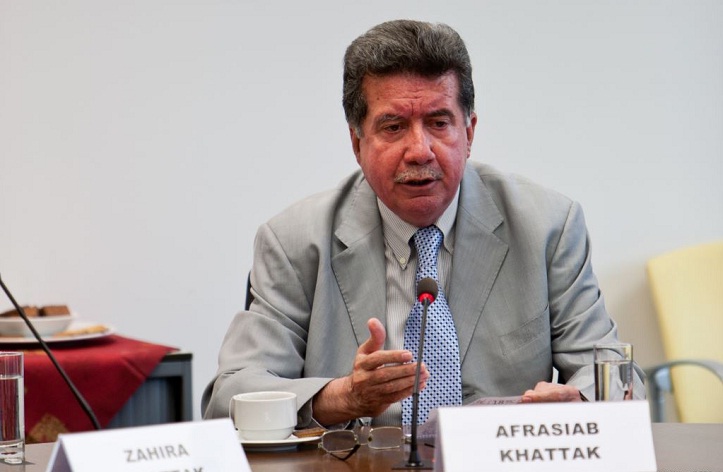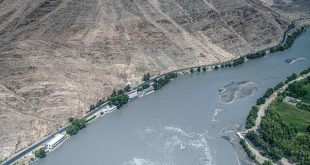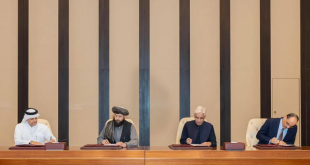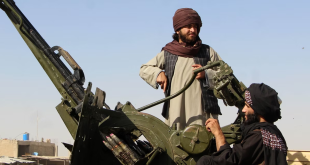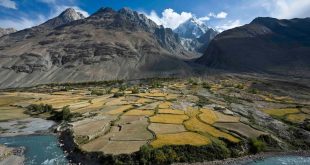The Islamic holy month of Ramadan, in which Muslims observe daylong fasting, is supposed to be a time for strict piety, restraint and self discipline. But this year Ramadan saw unprecedented escalation in fighting and bloodshed in Afghanistan as the Taliban continued the ruthless carnage, targeting common Afghans in most parts of the war-ravaged country.
The worst of the terrorist attacks in recent times came on May 8, when a car bomb targeted a girls’ school in the suburbs of Kabul killing around eighty persons, most of them young girl students. The Taliban’s denial of their involvement in such attacks isn’t convincing as most Afghans hold them responsible for the ecology of violence and terrorism in Afghanistan, particularly as they refuse to go for even a reduction in violence, let alone accepting a permanent and full-fledged ceasefire even after signing a peace deal with the US in Doha in February 2019.
Many of the Afghans have been critical of the US-Taliban Doha peace deal signed in the absence of the Afghan state. They think too many concessions were given to the Taliban in the Doha deal without making them renounce violence/terrorism or critically evaluating their brutal past and their extremist ideological positions.
Coined from the Arabic word ‘Talib-ul-Ilm’ (seeker of knowledge), the world Talib has, in the current political lexicon, come to stand for those young graduates of religious seminaries who fight to impose their own extremist interpretation of Islamic Sharia, replacing the modern state system in Pakistan and Afghanistan. The Islamic religious seminary is an old institution meant for teaching religion to Muslim children. But it underwent a sea change during the second half of the 20th century when the US-led West decided to use political Islam in its war against its archrival, Soviet Communism.
It was particularly after the Soviet invasion of Afghanistan in the 1980s that the West and its Arab allies invested billion of dollars in promoting Jihad (the holy war) against the ‘infidels.’ Thousands of religious seminaries were built in Pakistan that imported extremist ideologies from the Middle East in the garb of Islam to brainwash thousands of young Afghans to fight against the Soviet forces.
In 1994 the Taliban as a distinct group of warriors emerged in Afghanistan to fill the vacuum created by the internecine wars of the former Afghan Mujahideen. Pakistan’s security services adopted them as their ally to achieve the country’s main goal of strategic depth in Afghanistan.
Currently, there are around 36,000 religious seminaries in Pakistan functioning as factories to produce Taliban. It is a big and thriving industry, patronized by the military and run by the religious elites with huge investments from the Middle East. A good number of students here are still Afghans who have been used (and are still being used) as cannon fodder in different wars in Afghanistan during the last four decades.
After the collapse of the Soviet Union in 1991, and particularly after the attacks by Al Qaeda in the US on 9/11, many people thought that the West would change its strategy of using political Islam against other competing world powers. The induction of US armed forces to bring down the brutal Taliban regime in Afghanistan, and US drone strikes against Al-Qaeda fighters in Pakistan, Afghanistan, the Middle East and Africa, created the impression that the US and West regard the Islamic extremists/militants as their enemies and are fighting to eliminate this phenomenon.
But the recent developments–the US-Taliban Doha deal in particular–denies this perception. Initially many people thought the Doha deal represented a political expedient of the Trump administration in preparation for the presidential elections in 2020 in the US. But the way the new US administration has refused to reconsider the Doha deal, despite its failure in bringing peace and reconciliation to Afghanistan, proves it to be the consistent US policy toward the Taliban.
It seems the US wants to inject the Taliban into the Afghan system even at the cost of the gains of the Afghan state and society during the last two decades, which includes the emergence of a Constitution-based state system, thriving urban centers, and a nascent but dynamic civil society (with an independent media in particular). Afghanistan has also been joining the regional and international mainstream.
Apparently, the US seems to be convinced that it has effectively degraded Al Qaeda’s capacity to threaten the security of mainland US and its European allies. As far as the terror syndicate connected with Taliban is concerned, it’s a regional problem. Why should the US worry about it? After all, it can be a headache for China, Russia and Iran in Central and West Asia.
Some analysts go even further. They regard the emerging US-Taliban nexus as the sign of a new Cold War in Eurasia. The Belt and Road Initiative of the emerging new economic superpower China is regarded by US strategists to be the most significant challenge in the 21st century. They seem to be quite focused on making strategies to block this development. Post-Soviet Russia also seems to be reclaiming its traditional sphere of influence and expanding its footstep in the Middle East and elsewhere in the growingly multipolar world. Unfortunately, the geostrategic location of Afghanistan has the potential of attracting yet another big powers rivalry on its soil.
The emerging contours of the new Cold War reveal some similarities with the previous one as well as dissimilarities. The anti-China informal political and strategic alliance ‘Quadrilateral Security Dialogue’ (Quad) is steadily becoming formalized and is expected to expand. Tensions in the South China Sea are not only expected to persist but these can also intensify further. But like the previous Cold War, when tensions between NATO and the Warsaw Pact kept Europe polarized–and the actual physical clash took place during the Afghan war in 1980s–the new Cold War also has the potential of flaring up in Asia.
Religious militancy/terrorism produced for and used in the previous clash also comes in handy for the new confrontation. It’s particularly so when the Jihad factories are still in production and hundreds of thousands of trained and war-hardened militants are still on the market. If the experience of the 1990s is anything to go by, the Taliban won’t mellow with their contact with power. But even if they do, the other brands like IS, LeT, JeM and TTP are there to spread the anti-state militancy in the region. Daesh, at least the one in eastern Afghanistan, is just the rebranding of the Taliban using the same basic ideological moorings, human material and supply routes.
Apart from religious extremism, ethnocultural nationalism is the other fault line that can also be used in the fresh political polarization. The fledgling Turkish nationalism, particularly in its Pan-Turkic form, seems to have greater potential in its political impact. It is especially so as Turkey, the bastion of modern Turkish nationalism, is detaching itself from its secular past and is embracing an Islamic Turkish identity. Turkey under Erdogan may be doing it to expand its footprint in the Middle East but Turkish nationalism combined with Islamic fervor can be a lethal political tool in Central Asia also. Militant organizations like the Islamic Movement of Uzbekistan (IMU) and Eastern Turkistan Islamic Movement (ETIM) can thrive on this new political wave threatening Uzbekistan, Xinjiang and other parts of Central Asia. Despite local political problems in the Central Asian republics, the countries have been able to avoid prolonged internal armed conflicts so far because of the lack of a large scale international intervention. But a Talibanized Afghanistan can fundamentally change the situation.
 Afghanistan Times Latest News and Analysis from Afghanistan and the Region
Afghanistan Times Latest News and Analysis from Afghanistan and the Region
